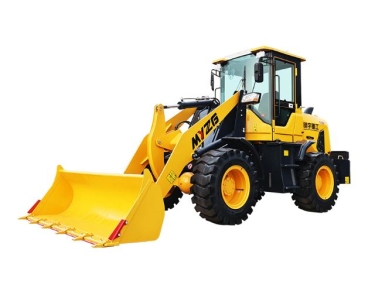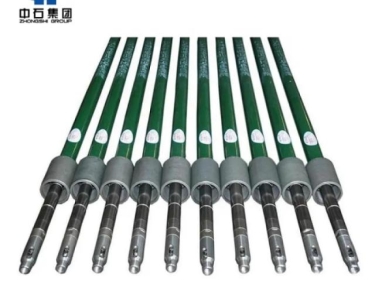China Set to Beat Us to Re-Emerge as India’s Top Trading Partner in 2022-23
China is on track to once again become India's top trading partner in 2022-23. Learn more about how this shift will impact the Indian economy and the wider geopolitical landscape.

The relationship between India and China is one factor that determines Asia's political and economic dynamics. The growing competition between these two largest states in the world causes concern in business and scientific circles in many countries. Indian-Chinese trade, in turn, is one of the key areas of bilateral cooperation, directly impacting cooperation in all other areas.
Many agree that bilateral trade's potential is far from fully realized. It is emphasized that for many commodity positions, India could step up its supplies and expand the list of exported products. Moreover, some Indian products are more competitive than their counterparts in Southeast Asia, with China having a much higher intensity of trade exchanges.
History of China-India relations
Active economic interaction between India and China began in the late 1980s. In the last decade of the 20th century and at the beginning of the 21st century, bilateral trade partnerships were characterized by high annual growth rates, reaching 60–70% and, in some years, exceeding 100%. In the pre-crisis year of 2008, the trade volume reached $41.7 billion. In the 2010s, growth was uneven, with periods of low recessions recorded in 2012–2013. and 2015–2016, but overall there was a trend toward an increase in bilateral trade. In 2018 the volume of trade partnerships amounted to $90 billion, a record figure for all the years of Indian-Chinese cooperation.
Since 1993, India's imports from China have accounted for a significant share of bilateral trade. It was then that the formation of a stable deficit in favor of the PRC began in the Indian-Chinese trade partnership: from 1988 to 1999, for which export accounted for 34% of supplies, and imports, respectively, - 66% in 2010-2020. This ratio changed in favor of imports, whose share in the volume of trade exceeded 80%. From 1996–2017 India's negative trade balance with China rose from $100 million to $59.4 billion.
In the past few years, the situation in the India-China trade partnership has changed, which was the result of the economic difficulties caused by the global pandemic coronavirus, the escalation of tensions on the India-China border, and the general desire of the Indian side to change the balance of power in its favor. In 2019–2020 Indian deliveries increased to $17.3 and $19 billion, while purchases from China on the other hand, decreased to $68.4 and $58.8 billion, and the negative trade balance increased to $39.8 billion.
Importance of Bilateral Trade
The economic significance of bilateral trade between India and China is different. While China accounts for only 1.9% of all trade with India (2.6% exports, 1% imports), China's share in Indian trade is 12.1% (6.9% exports and 16% imports). At the same time, China's share of India's trade is showing an upward trend, but India's share grew until 2010 and then stopped at 2%. At present, China is India's No. 1 trading partner, while India is only in 9th place in the list of the main countries trading with China, behind in terms of mutual trade in goods with the USA, Hong Kong, Japan, Vietnam, the Republic of Korea, Germany, the Netherlands, and the UK.
Evaluation of the effectiveness of trade interaction
The effectiveness of mutual trade is determined by the value of exports and imports and aggregated index indicators. An analysis of several index indicators allows us to unequivocally state that India's trade with China is lower than expected, given the size of the two economies and their participation in world trade. On the contrary, the scale of Chinese commodity presence in the Indian market is huge, and there is an upward trend for this indicator.

Assessing the level of integration between the two countries gives similar results: a close trade partnership union is observed for Chinese exports and Indian imports. In contrast, the level of "connectivity" between Indian exports and Chinese imports is low.
Mutual trade in services
Unlike China, the global factory of the world, India has gradually become its service center over the past 30 years. In the matter of successful penetration into overseas services markets, India has fared far better than its commodity markets – its share of global service exports has been stable over the past decade, about 3.5% (according to the results of 2020 - over 4%), while in world exports of goods - just over 1%. Moreover, unlike trade in goods, trade in services has traditionally been in surplus, and the basis of its exports is services related to software production and business process outsourcing.
Indian-Chinese trade in services is still at a fairly low level. One can only assume that the main services are transport, tourism, and computer and information services. Although India is one of the largest service providers in the field of information technology, there are still great restrictions in the Chinese market, as well as the language barrier, which also does not contribute to the intensification of cooperation in this area.
The main contradictions in the Indian-Chinese trade
• Trade imbalance. Despite the intensification of trade relations between India and China, there are certain disagreements between these countries in the economic sphere, hindering the development of ties in bilateral trade. First of all, it should be noted that India's exports to China and Chinese deliveries to India are very different in their content.
• Market closure and trade barriers. The problem described above is directly related to another, namely, the persistence of high tariff and non-tariff barriers between India and China and the closeness of the Chinese market to Indian suppliers. A comparison of China's tariff regulation shows that for many commodity groups, including tobacco, sugar, cereals, and fertilizers, customs duties for India are higher than for other countries. At the same time, for some tariff measures, an increase in the level was recorded, so it is not yet possible to talk about a gradual reduction in customs duties in relations between India and China.
• Dependence on supplies from China. India's strong concern is dependence on the supply of certain categories of goods from China. Thus, China exports to the Indian market many products ranging from the simplest things, such as nails and buttons, to sophisticated electronics and pharmaceutical components. Thanks to the supply of pharmaceutical ingredients for generic drugs from China, India has made significant progress in the production of medicines and their export to other countries. 83% of the Indian mobile phone market and 90% of the color TV market are imported from China.
Conclusion
First, it is worth noting the high and increasing intensity of trading interaction: over the period under review, bilateral trade has grown significantly. However, the available figures are far from potential: practically all researchers agree that the prospects for developing trade relations are much wider than those currently implemented.
Secondly, there are many imbalances in India-China trade relations, including a large gap between exports and imports, leading to the problem of a negative trade balance and, as a result, the need to address it as soon as possible, as it can lead to negative consequences for the economy as a whole.
Finally, it should be emphasized that India is taking active steps to eliminate imbalances by adopting political decisions, some of which are quite radical. For example, 2022 showed that the attitude of Indian industrialists is quite negative towards China, which, in general, is not surprising, given the region and world situation. Nevertheless, experts are quite positive about the prospects for developing Indian-Chinese trade in 2023, and China may overtake the USA.
Stay in the Loop with Export Portal
To learn more about how you can successfully trade at an international level and build your export and import website, check out Export Portal's Blog Page!


















Comments 0